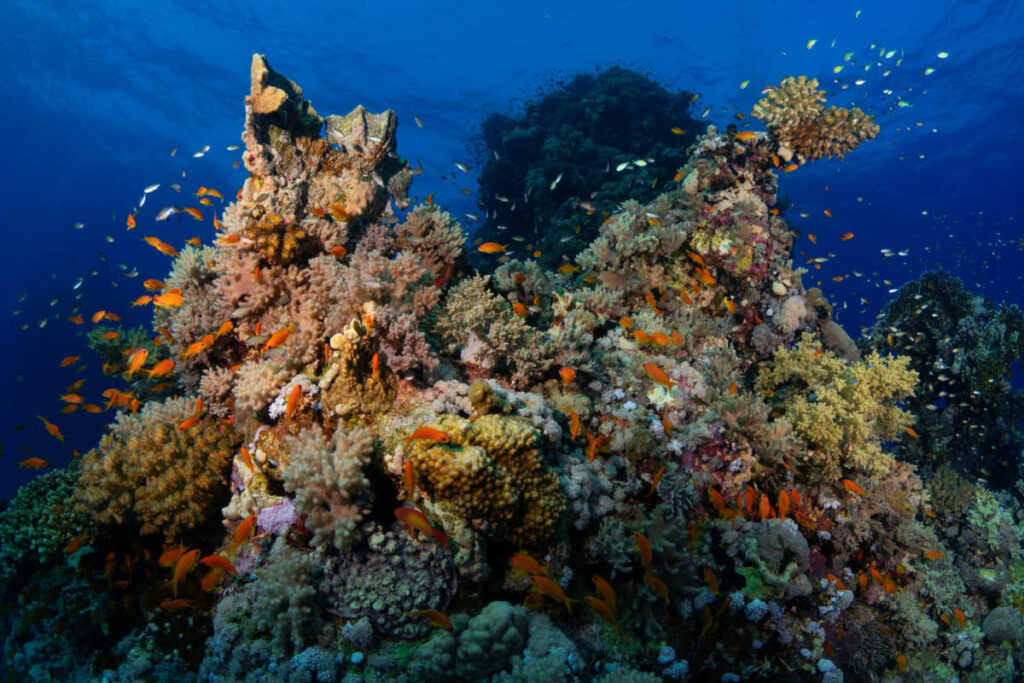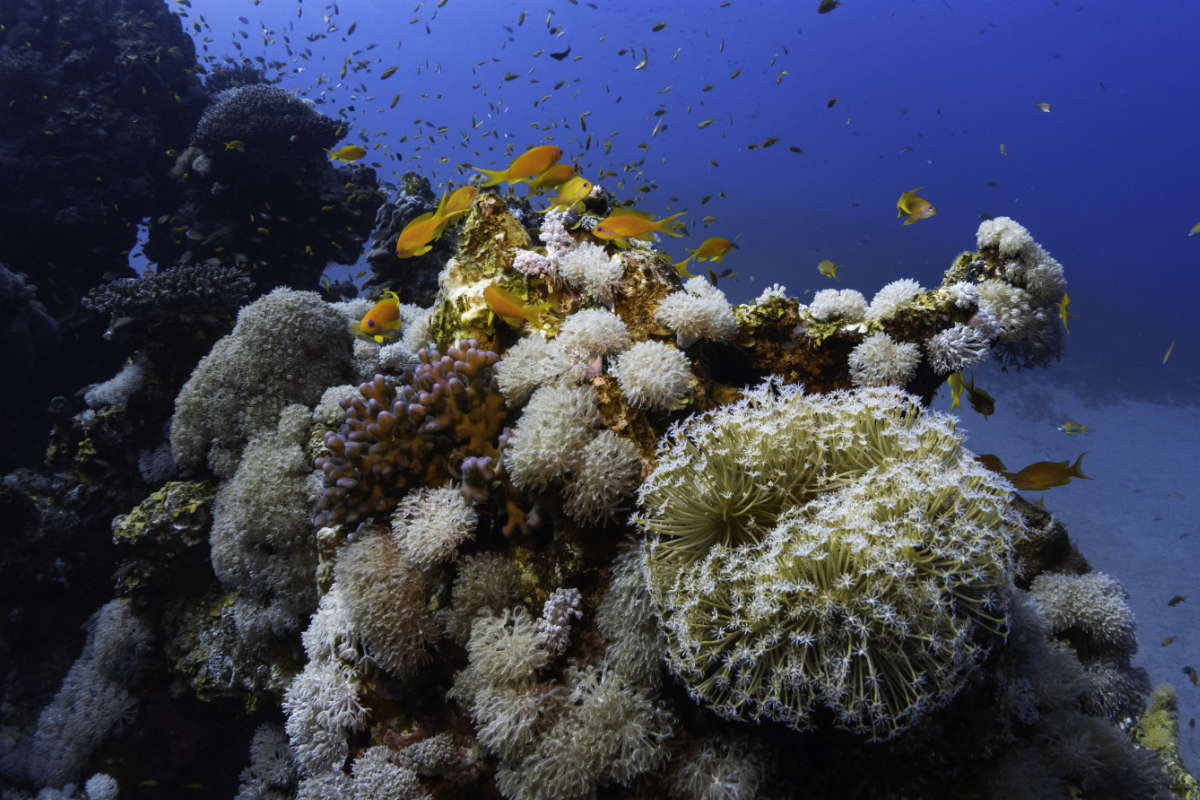Anthias, a vibrant and captivating genus of fish, are referred to as the jewels of coral reefs.
A group of small fish that belong to the family Serranidae, subfamily Anthiinae. These stunning creatures are not only admired for their dazzling appearance but also play a crucial role in the health and biodiversity of coral reef ecosystems.
With over 200 species, anthias are predominantly found in coral reefs, thriving in the nutrient-rich waters where they can easily access their primary food sources: zooplankton and small invertebrates. They are often seen hovering above the reef during the day, darting in and out of coral formations to catch prey. At night, they retreat into the reef to avoid predators.
The highest diversity of anthias species is found in the Indo-Pacific region, particularly around the coral triangle making our Best of Raja Ampat itinerary – which explores the most biodiverse area on earth – the ideal way to see them.
However, anthias can also be found in the Red Sea and the western Atlantic Ocean.
Characterized by their brilliant colours – which can range from vivid oranges, pinks, and purples to striking reds and yellows – these hues often change with age, sex, and social status, adding to the creature’s allure.
The size of anthias also varies depending on the species and they range from two to eight inches in length.
One of the most fascinating aspects of anthias is their social structure.
They live in large schools, often numbering in the hundreds or even thousands. Within these schools, anthias exhibit a complex hierarchy. The social structure is usually dominated by a single male who maintains a harem of females. If the dominant male is removed or dies, the largest female undergoes a sex change and assumes the role of the dominant male.
This phenomenon, known as protogynous hermaphroditism, ensures the stability and continuity of the school.
Anthias also play a vital role in maintaining the health and balance of coral reef ecosystems.
By feeding on zooplankton and small invertebrates, they help control these populations, preventing them from becoming overly abundant and potentially harmful to the reef.
Additionally, anthias are an important food source for larger predatory fish, contributing to the complex food web that sustains the reef environment.
But it’s not predators alone that pose a threat to them.
As with many similar creatures overfishing, climate change, and habitat destruction are significant concerns.
Rising sea temperatures can lead to coral bleaching, which destroys the habitats that these fish rely on. Ocean acidification, another consequence of climate change, can also affect the availability of calcium carbonate, essential for coral growth and maintenance.
The aquarium trade poses a threat to certain species of anthias, too, due to their popularity. Overharvesting can lead to imbalances in reef ecosystems, highlighting the need for sustainable practices and regulations.
More than just beautiful inhabitants of coral reefs; anthias are integral to the health and biodiversity of these ecosystems.
Their striking colours and fascinating behaviours make them a favourite among divers. However, their future depends on our ability to protect and preserve their habitats. Through sustainable practices and increased awareness, we can ensure that these vibrant jewels of the ocean continue to thrive for generations to come.
If you would like to find out more about our Indonesia or Red Sea itineraries which could give you an experience of diving with anthias, contact our amazing team on [email protected]


